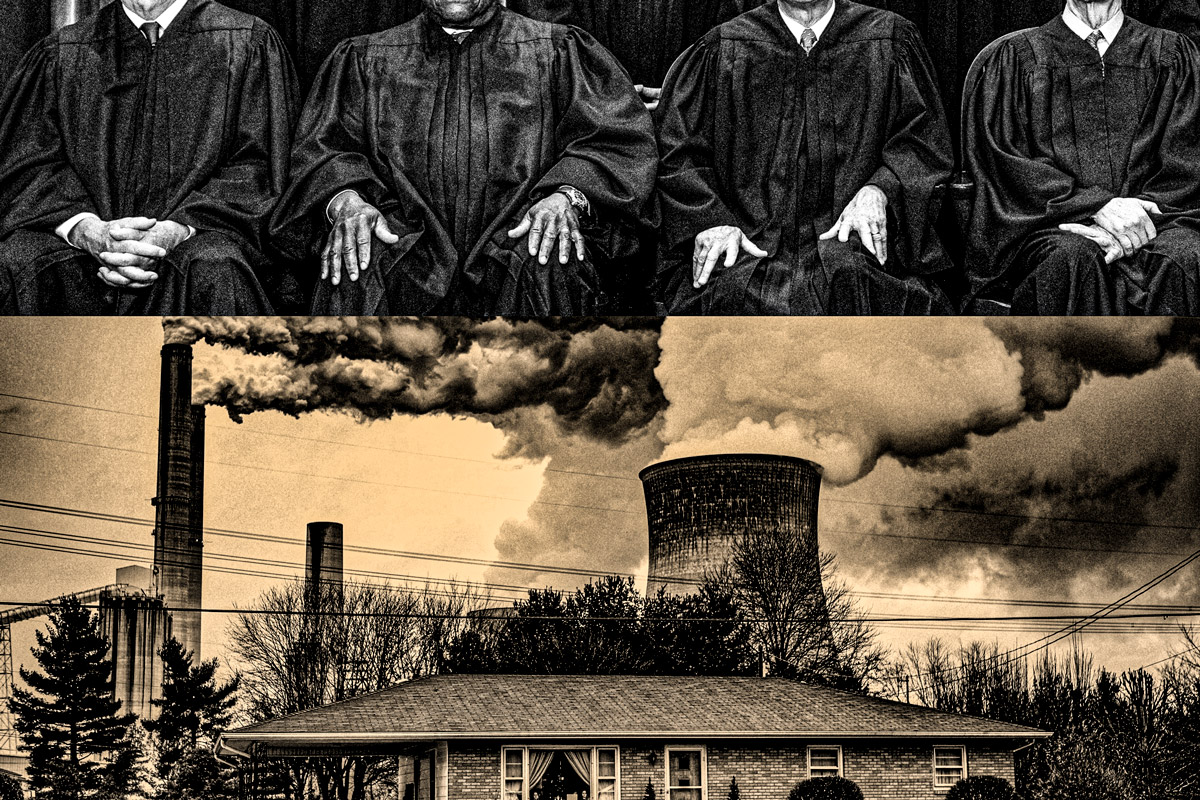There are many long-term forces that converged in the disaster of the U.S. Supreme Court’s ruling in Dobbs v. Jackson Women’s Health Center overturning the constitutional right to an abortion, from the shameful history of coerced births under the regime of American slavery to the mobilization of the evangelical right to deny abortion rights and seize judicial power at all levels of the federal judiciary.
But as a matter of immediate political causation it’s also important to note a key analytical point: In many respects, white women did this. The fate of Roe v. Wade was decided on that miserable day in 2016, when white women en masse chose Donald Trump as president instead of Hillary Clinton. Abortion was one of the main issues that the GOP had campaigned on, and a key plurality of white women decided that it was good idea to choose representatives who would vote to take the right to choose away for them.
The rest, as they say, is history. Once the prim movement conservative Amy Coney Barrett was installed on the U.S. Supreme Court in 2019, it was simply a matter of time before this white woman became the determining vote in a new conservative majority sure to take away American women’s right to choose. What’s more, the electoral fallout from this disastrous turn soon re-confirmed the dismal results of the 2016 presidential cycle: In defiance of the confident forecasts of a fierce mobilization of outraged feminists harking back to the Women’s March after Trump’s inauguration, the numbers of white woman voting for Trump only increased in 2020. Since then, the American right has been eagerly anticipating the day when the Court would cast aside its long-standing principles of stare decisis—the honoring of past precedent in favor of stability and continuity in judicial review—and slash away the constitutional right to abortion that they had recognized for over fifty years.
It was simply a matter of time before Justice Amy Coney Barrett became the determining vote in a new conservative majority sure to take away American women’s right to choose.
“The Constitution does not confer a right to abortion. Roe and Casey are overruled,” wrote a glib Samuel Alito, whose majority draft opinion in the case had been leaked weeks earlier. Dobbs v. Jackson Women’s Health Center is a 5-4 decision, and Coney Barrett was the deciding vote that turned the tide. The sweeping terms of Alito’s argument against abortion rights also allowed Justice Clarence Thomas—who owes his seat on the court to the intersectional failures to address the role of patriarchy within the Black community—to pen a concurring opinion that included this ominous warning about likely future rulings on the docket: “in future cases, we should reconsider all of this Court’s substantive due process precedents including Griswold, Lawrence and Obergefell.” Griswold v. Connecticut is the ground-breaking case that decreed that marital couples had a right to privacy against state interventions against contraception; Obergefell v. Hodges is the case that legalized gay marriage in the United States. Such intentions would have been deemed fanciful a mere two years ago; today, they are clear portents of what is to come.
The consequence of Dobbs is harsh and instant. Starting now, if a pregnant teenager is brought into an emergency room in Kentucky (one of the three states that now bans abortion completely) hemorrhaging and losing blood, doctors would not be able to perform emergency surgery to save her life. The unborn fetus in this scenario could be removed because it would constitute an abortion—and as a result both the mother and the child would very likely die.
These sorts of circumstances take place all the time. When I worked at a domestic violence shelter, I had to take a pregnant teenager who was a repeatedly raped trafficking victim to the hospital so she could get an abortion. To my surprise, a female doctor who came in seemingly to examine the girl began to deliver a lecture addressing on why she should not choose to have an abortion. The reason: the doctor’s own inability to get pregnant at an advanced age. I was aghast and managed to shoo the doctor away.
All this, I now realize, happened in what will be remembered as the “good” days, when the constitutional right to abortion meant that the hospital still had to carry out the procedure regardless of what health care professionals felt about it. This girl who had been trafficked to the United States, her body horribly abused by men, had the constitutional right to choose what happened to her body. This provision of choice could not erase what had happened to her, but it did make her whole as a legal actor who had power and agency over her own fate.
Justice Amy Coney Barrett is not the only woman on the Supreme Court who doomed the fate of Roe v. Wade. It must be remembered that Barrett occupies the seat vacated by Justice Ruth Bader Ginsberg, whose death in 2020 created a last-minute vacancy on the court for Trump and then-Senate Majority Leader Mitch McConnell to exploit. Ginsberg was an esteemed liberal justice who was brave and bold enough to declare her support for abortion in her 1992 Senate confirmation hearing: “It is essential to woman’s equality with man that she be the decision maker, that her choice be controlling and If you impose restraints that impede her choice, you are disadvantaging her because of her sex.”
Yet despite this energetic defense of the right to choose, which justifiably elevated her to the status of a feminist icon, Ginsberg, who had fought several bouts of cancer, refused to retire at 80 during President Obama’s tenure. At that time, a liberal justice dedicated to upholding the intersecting rights to bodily autonomy could have been appointed to her seat. It was an individual decision, but its consequences, which were predictable years ago, have now gone on to adversely affect millions of American women.
You can be assured that the opponents of abortion rights have been paying attention to all this. With the gutting of Roe, the United States is effectively divided into two. Blue states will legislate and ensure that women can safely obtain abortions. And red states will be vying with one other to pass the most draconian abortion bans possible. The current ban-crazy frontrunner is Missouri, which prohibits abortion since the moment of fertilization. This would mean not only an end to abortion rights but also to any kind of in vitro fertilization where embryos are created and then implanted or destroyed. All such interventions in the reproductive process are now off limits under Dobbs—something exceedingly difficult to imagine in an age of otherwise rapidly advancing scientific and technological innovation.
With the gutting of Roe, the United States is effectively divided into two.
The Dobbs ruling also poses a very specific threat to women in communities of color. In a recent interview on NPR, the leaders of various Christian and white supremacist organizations agreed that the mobilization against abortion rights had united them. “There’s a far-right idea of demographic decline or of the great replacement in which Christian civilization or white people are being outnumbered by non-Christian and nonwhite people,” one of them explained. Right-wing leaders in many red states with sweeping abortion bans are now explicitly catering to these fears, however bizarre and bigoted they may be. In those states, the banning of abortion is of a piece with the replacement-theory agenda of increasing the numbers of white children born to white women.
It’s a sad truth that a majority of white women in the United States are voting on the basis of their race rather than their gender. President Trump and his MAGA allies ran campaigns whose white-supremacist and male-dominant subtexts were obvious all along. In stark contrast, Black women have voted for Democrats by overwhelming majorities, north of 90 percent.
This is the sense in which the scuttling of Roe is a victory for white supremacist women. This harsh truth tends to get crowded out in mainstream press coverage of the abortion controversy, which tends overwhelmingly to depict the anti-abortion crusade as a matter of outraged individual religious conscience. In reality, though, the two Americas emerging in the wake of the Dobbs ruling are already aligning with two very disparate visions of race and gender equality. If we have any remote hope to achieve the restoration of abortion rights, white women must be taught the value and importance of women’s independence when it comes to making decisions about their bodies. Or to put things another way: white women must see that ideas of white supremacy and male dominance are harmful and retrogressive—so much so that they are now reversing decades of progress toward women’s rights and women’s equality.
Rafia Zakaria is the author most recently of Against White Feminism (W.W. Norton, 2021). She is also a columnist for The Baffler and Dawn (Pakistan).



